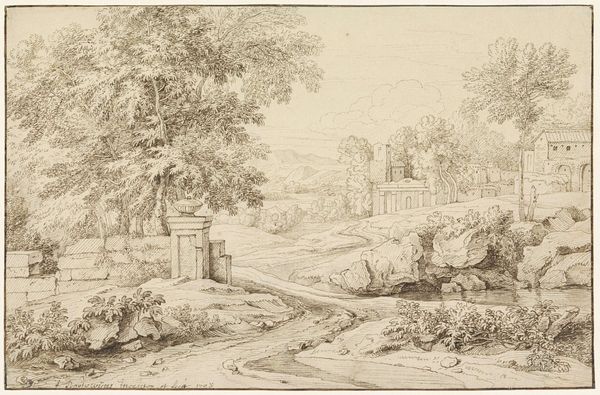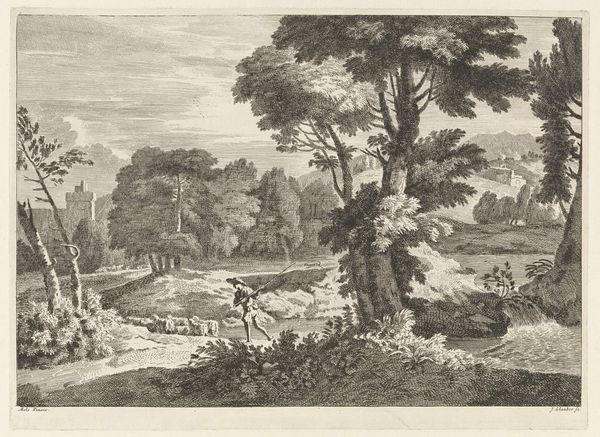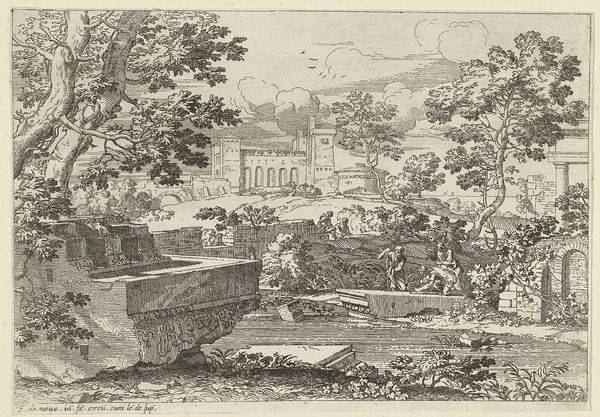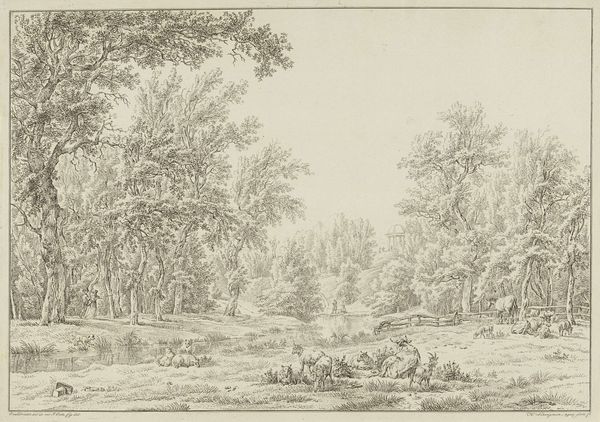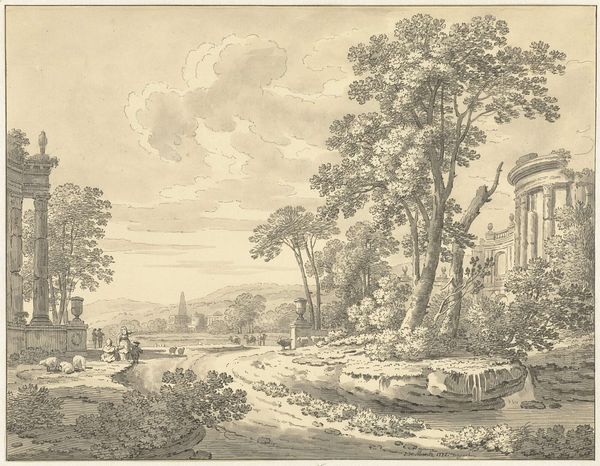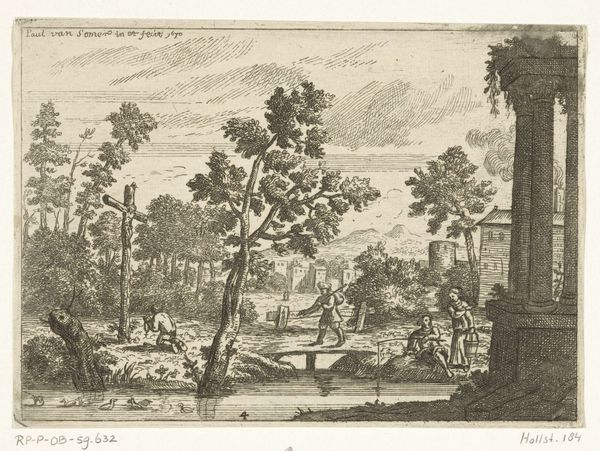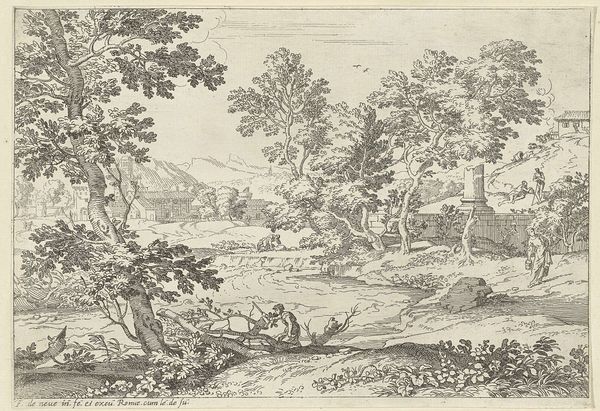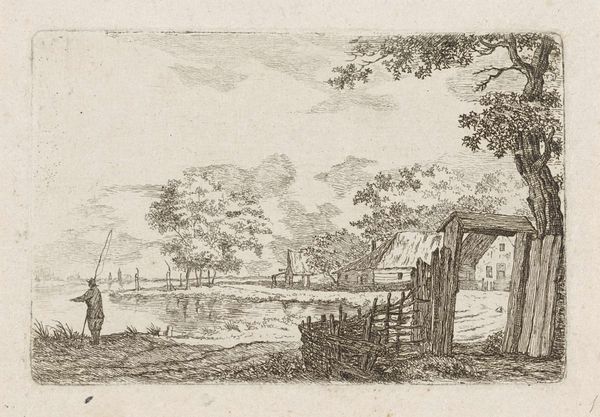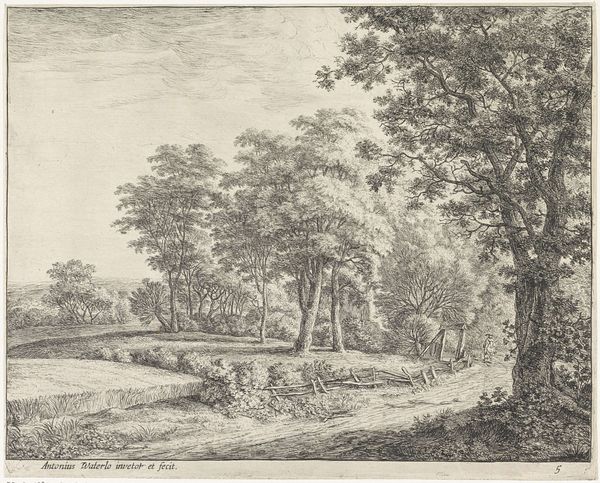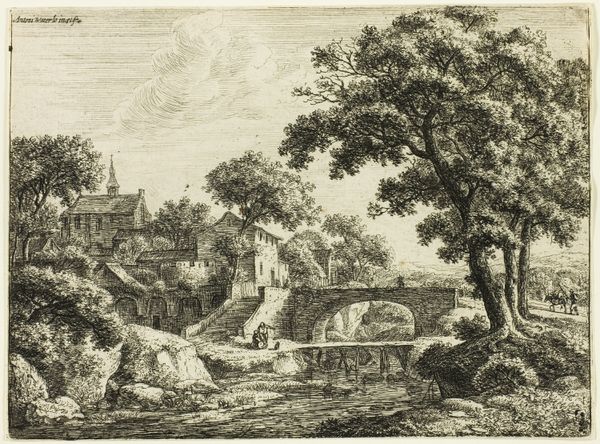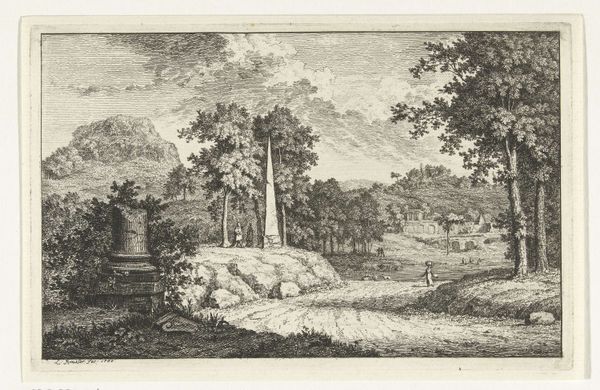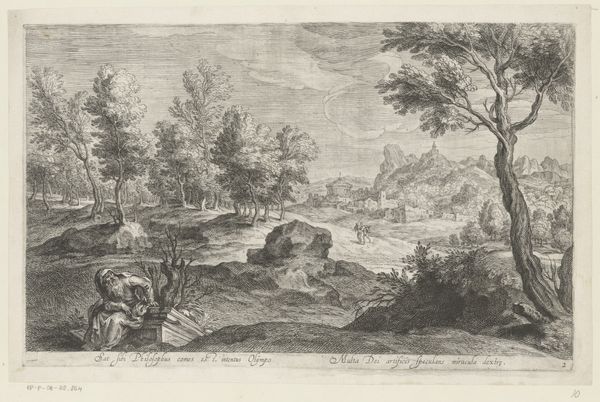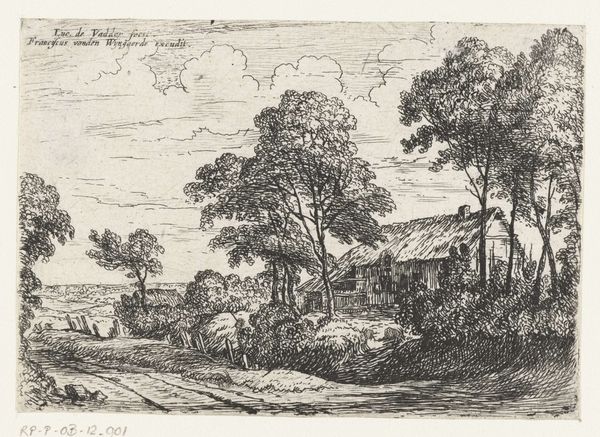
print, engraving
#
baroque
#
pen drawing
# print
#
old engraving style
#
landscape
#
genre-painting
#
engraving
Dimensions: height 192 mm, width 275 mm
Copyright: Rijks Museum: Open Domain
Curator: This is "Landscape with an Angler" by Franciscus de Neve, created sometime between 1616 and 1708. It's an engraving currently held in the Rijksmuseum. Editor: My first thought is that the engraving feels like a stage set. The crumbling architecture in the background, combined with the figures, suggests a narrative, almost theatrical tableau. Curator: I see what you mean. Baroque art loved drama, and even in landscapes, that theatrical sensibility is often present. This engraving offers a view into how the elite viewed nature, filtered through classical ideals. The ruins imply a past Golden Age, contrasting with the daily life of the fishermen. It speaks to the era's preoccupation with the rise and fall of civilizations. Editor: And the figures within it, these almost anonymous laborers set against this idyllic backdrop, makes you wonder about class structures of that time. What was it like for working-class people, the anglers in this carefully constructed view of nature? Were such leisure activities open to them as well? It reminds us who landscape art was historically made for—and who it often excludes. Curator: Exactly. While seemingly depicting a simple genre scene, there is a larger conversation here regarding ownership and privilege. Consider the detailed technique of the engraving. Every blade of grass, every stone seems deliberately placed, indicative of how people meticulously arranged the natural environment, bending nature to their will to echo this concept of cultivated artifice. Editor: I'm especially drawn to the architectural remains; they could be read as metaphors for the decline of the empire, as is very usual in baroque. At the same time, nature takes its course: it devours the city and opens doors for new societies, maybe? A nature/culture dialectic. And this idea connects powerfully with contemporaneity: are we ready for that nature revenge? Curator: I agree completely. It reveals a very conscious attempt to link their own time with this past, a kind of legitimization through antiquity. Editor: Looking at "Landscape with an Angler," it offers us more than just a scenic view; it offers a moment to contemplate class, time, and history reflected and refracted through the artist’s meticulous lines. Curator: Yes, de Neve provides not just an image, but an artful lens through which to view both his world and the world of the ancients. It’s more than scenery; it’s a staged production of an ideal.
Comments
No comments
Be the first to comment and join the conversation on the ultimate creative platform.
